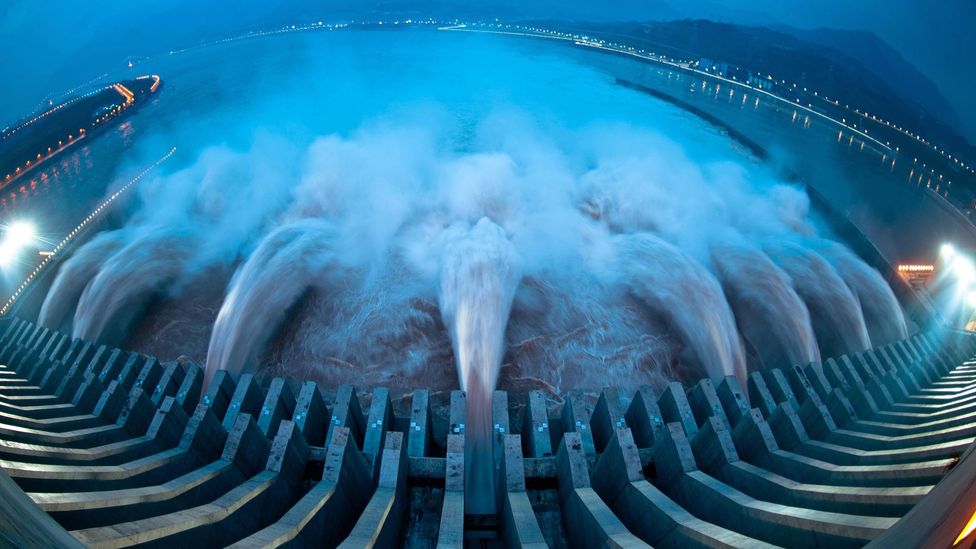Some of the most dangerous dams in the world are located in developing countries, where poor maintenance and lax safety standards can lead to catastrophic failures. In 2018, a dam collapsed in Laos, killing dozens of people and causing widespread damage.
Other dams have been built in seismically active areas, such as Iran, where they are at risk of being damaged or destroyed by earthquakes. And some dams are simply old and in need of repair, which can put them at risk of failure.
Here are some of the most dangerous dams in the world:
1. Vajont Dam, Italy
The Vajont Dam is located in the province of Belluno, in the Veneto region of Italy. Construction on the dam began in 1957 and was completed in 1963. The dam was built to provide hydroelectric power to the region and to irrigate the valley below. However, the dam became infamous in 1963 when a massive landslide caused a wave of water to overtop the dam, resulting in the death of over 2,000 people. The Vajont Dam is now considered one of the most dangerous dams in the world.
2. Itaipu Dam, Brazil/Paraguay
The Itaipu Dam is located on the Paraná River on the border between Brazil and Paraguay. The dam is the largest hydroelectric power plant in the world, and it supplies 20% of Brazil’s energy needs. The dam was completed in 1984, but it has been plagued by a number of problems, including cracks in the concrete and erosion of the river bed. In 2006, a massive flood caused one of the spillways to collapse, resulting in the death of seven people.
3. Tarbela Dam, Pakistan
The Tarbela Dam is located on the Indus River in Pakistan. The dam was completed in 1976 and is the largest earth-filled dam in the world. The dam provides irrigation water for over 3 million acres (12,000 km²) of land and supplies hydroelectric power to much of Pakistan. The dam has been plagued by a number of problems, including poor construction, leakage, and seepage. In 2005, the Pakistani government ordered an investigation into the dam’s safety after it was revealed that the reservoir was only half full.
4. Kariba Dam, Zambia/Zimbabwe
The Kariba Dam is located on the Zambezi River on the border between Zambia and Zimbabwe. The dam was completed in 1959 and is the largest hydroelectric power plant in Africa. The dam supplies electricity to both Zambia and Zimbabwe and helps to control flooding in the region. However, the dam has also caused a number of problems, including environmental damage and displacement of local people. In 2010, the dam was nearly overtopped by floodwaters, prompting a mass evacuation of people living downstream.
5. Bhakra Nangal Dam, India
The Bhakra Nangal Dam is located on the Sutlej River in the state of Himachal Pradesh, India. The dam was completed in 1963 and is the second largest earth-filled dam in the world. The dam provides irrigation water for over 3 million acres (12,000 km²) of land and supplies hydroelectric power to much of northern India. The dam has been plagued by a number of problems, including poor construction, leakage, and seepage. In 2006, the Indian government ordered an investigation into the dam’s safety after it was revealed that the reservoir was only half full.
6. Three Gorges Dam, China
The Three Gorges Dam is located on the Yangtze River in the Hubei province of China. The dam was completed in 2006 and is the largest hydroelectric power plant in the world. The dam provides electricity to over 500 million people and helps to control flooding in the region. However, the dam has also caused a number of problems, including displacement of over 1 million people, environmental damage, and increased risk of earthquakes. In 2010, a massive landslide killed over 100 people and caused widespread damage downstream.
7. Oroville Dam, United States
The Oroville Dam is located on the Feather River in the state of California, United States. The dam was completed in 1968 and is the tallest dam in the United States. The dam provides irrigation water for over 1 million acres (4,000 km²) of land and supplies hydroelectric power to much of northern California. The dam has been plagued by a number of problems, including poor construction, leakage, and seepage. In 2005, the United States government ordered an investigation into the dam’s safety after it was revealed that the reservoir was only half full.
8. Aswan Dam, Egypt
The Aswan Dam is located on the Nile River in Egypt. The dam was completed in 1970 and is the largest embankment dam in the world. The dam provides irrigation water for over 3 million acres (12,000 km²) of land and supplies hydroelectric power to much of Egypt. The dam has been plagued by a number of problems, including poor construction, leakage, and seepage. In 2002, the Egyptian government ordered an investigation into the dam’s safety after it was revealed that the reservoir was only half full.
9. Koyna Dam, India
The Koyna Dam is located on the Koyna River in the state of Maharashtra, India. The dam was completed in 1967 and is the largest hydroelectric power plant in India. The dam supplies electricity to over 4 million people and helps to control flooding in the region. However, the dam has also caused a number of problems, including displacement of over 50,000 people, environmental damage, and increased risk of earthquakes. In 2006, the Indian government ordered an investigation into the dam’s safety after it was revealed that the reservoir was only half full.
10. Tarbela Dam, Pakistan
The Tarbela Dam is located on the Indus River in the province of Sindh, Pakistan. The dam was completed in 1976 and is the largest earth-filled dam in the world. The dam provides irrigation water for over 4 million acres (16,000 km²) of land and supplies hydroelectric power to much of Pakistan. The dam has been plagued by a number of problems, including poor construction, leakage, and seepage. In 2005, the Pakistani government ordered an investigation into the dam’s safety after it was revealed that the reservoir was only half full.


